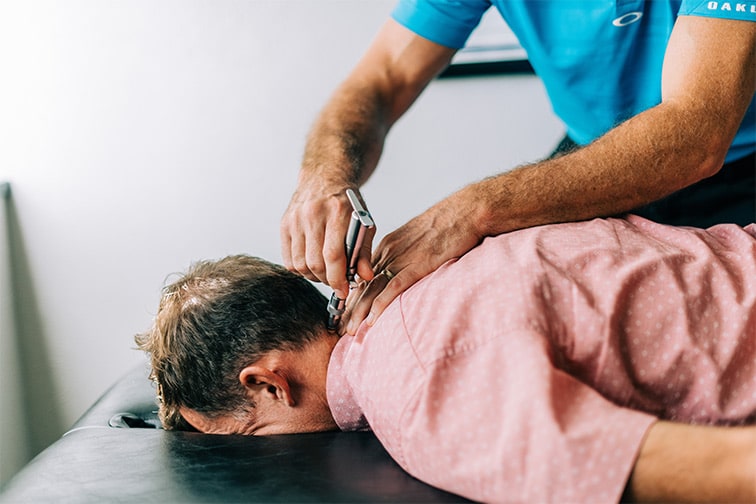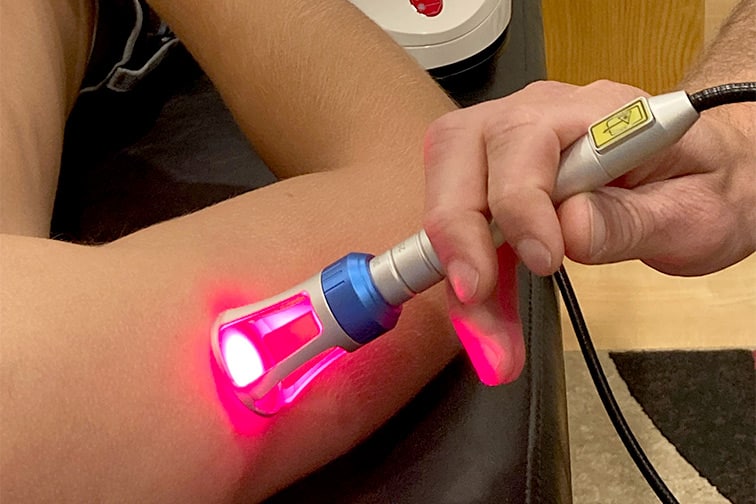When you have been in practice for over 18 years, you get to see many things; from the strange and unusual to the generic and common. One condition I have seen many times but always strikes a person as something strange and unusual — the notorious shoulder/arm pain that is not a problem in the arm at all. It is in the neck.
You Can’t Just Attack the Pain Point
Not too long ago, I had a patient come in with severe pain in his armpit that also went down the back of his arm. He is someone who I have been working with and helping for many years. He is also one of the most athletic people I know. Previously he had come into the office wanting to work on his shoulder flexibility. I suggested an exercise called a wall walk where you do a handstand against the wall but you are facing the wall instead of facing away from it. He started doing those but a day or two after doing them, he started having serious pain in his armpit and back of his arm, and he came into the office telling me the pain was absolutely unbearable.
I assessed him and both of us came to the conclusion that he must have strained something in the shoulder/pectoral region, although he didn’t remember injuring it. I worked on it but it brought very little relief. The pain continued to be debilitating and relentless.
He made a lot of statements that made me think that his problem was coming from his neck and not his shoulder. One of the statements that really made me think this was he said that he just wants to put his hand on top of his head as that relieves the pain.
On the third visit about this issue, I told him that I felt that his problem was not a shoulder issue at all but a neck problem and we should focus there. He had a hard time believing this as he had zero pain in his neck. From having worked together for years, he decided to trust me and go with it.
The first thing I had him do was to use one of our traction devices for his neck. I told him to use it 3 – 5 times every day. He emailed me a couple days later and said that the pain had reduced significantly. This was proof to him that it was indeed coming from his neck.
After using the traction device, doing specific exercises, and getting chiropractic adjustments, he is back to his very active life and exercising with no problems at all. It took about a month to get there but he is very happy to be back to normal.
How and Why Pain Refers
When one of the discs in our spine herniates, it can put pressure on the nerve directly or the inflammatory chemicals in the area will irritate the nerve. When this happens, you would think there would be pain in your neck but many times the person has no pain at all where the disc has herniated. Instead, the person has referred pain, which means wherever that nerve goes to starts to hurt.
The most common place that the pain refers to is the right along the shoulder blade toward the spine. It can feel like a burning sensation that you constantly need to rub. The problem is that where you are rubbing is not where the problem is, so you never really get any relief. Sometimes the neck causes numbness or tingling feelings going down the arm and/or into the hand.
I had another patient who was complaining of that exact problem. We would work on the area that she said hurt. She said it would help but it was very temporary. When I heard this, right away I knew to look further into her problem. I did some tests such as pushing down on top of her head, which made her shoulder hurt more, and some manual traction on her neck, which made her symptoms better. This confirmed my suspicion — she had a herniated disc.
Do You Need Surgery for a Herniated Disc in the Neck?
For most people surgery is not necessary, although when you are dealing with the pain, I think many people would like to have something that can fix it ASAP.
If you have ever sprained an ankle, you know that it hurts but there are some things a person can do to minimize the pain such as wrap it, rest it, and ice it. With your neck, it is much more difficult. You can’t not put weight on it, the disc is deep in the neck so icing it is not very effective, and wrapping it is pretty much out of the question although a neck brace may help a little.
Research has shown that resting it and doing traction are very effective. We encourage patients to utilize a home traction device that they can rent from our office. They benefit the most when they use traction 3 – 5 times/day. That is why a home device is recommended.
Therapies to Help Your Neck
Trigger point work (a massage technique) on the muscles surrounding the herniated disc can also be very helpful. In our office we utilize Nimmo technique, a type of chiropractic adjustment that resets the nerve inside the muscle to get it to relax.
Regular chiropractic adjustments can also be very helpful but they need to be the right kind. Rotational type adjustments are usually not helpful and most of the time actually irritate the disc. In our office, we utilize the integrator, a small instrument used to adjust. This type of an adjustment is very effective in helping a person recover from a herniated disc.

How Long Will It Take? Have Patience!
If you read our post on dehydrated discs, you know that the discs have very little direct blood supply. Due to this, the healing of a disc is slow. But there are many things that can be done to speed up healing.
Traction takes the pressure off the disc, but it also creates a sort of vacuum effect that allows for better blood supply. Therefore, it is an absolute must.
Movement of the joint is important because movement allows for blood flowing into the disc. Getting the splinting muscles to relax is also a must. Chiropractic adjustments will also help the joint to move. Again, make sure it is the right kind of adjustment, not one that will irritate an already inflamed joint.

Cold laser can also help speed up healing, but it needs to be a class 4 laser. Class 3 and lower lasers will not penetrate far enough into the body to get to the disc. We utilize a class 4 laser in our office.
Nutrition is super important for healing as well. The foundation of the disc is a connective tissue called collagen. Taking collagen can be helpful but getting it in your diet is really important for healing too. It is also helpful in prevention. Foods like chicken wings (not deep fried) have the collagen in the skin as well as in the ligaments that attach the meat to the bone. Vitamin C is the backbone of collagen, so be sure to eat citrus fruits and peppers. Grandma’s homemade chicken soup made with real bone broth is also a great way to get that joint complex needed for a healthy disc, as well as all the other joints in the body.
So You Are Saying That I Don’t Need Surgery?
As you can see, there are many things that can be done to heal a disc. With that said, sometimes surgery is necessary, especially if the person is experiencing strength deficits and muscles start to atrophy. Nerve damage can be a significant problem with a herniated disc. You don’t want to mess around and try to fix this problem on your own. It is very important, no matter what degree of disc herniation you have, that you work with a trained professional to help you through this. For most people, doing what I have recommended above will allow for healing and full recovery.




